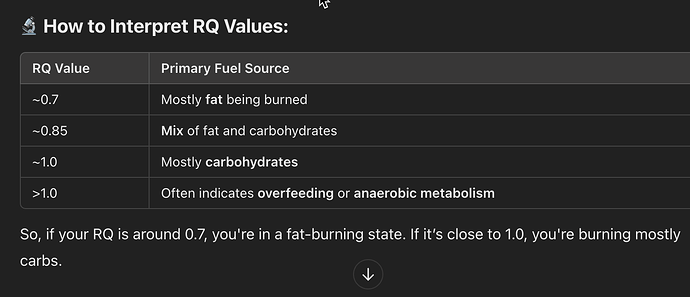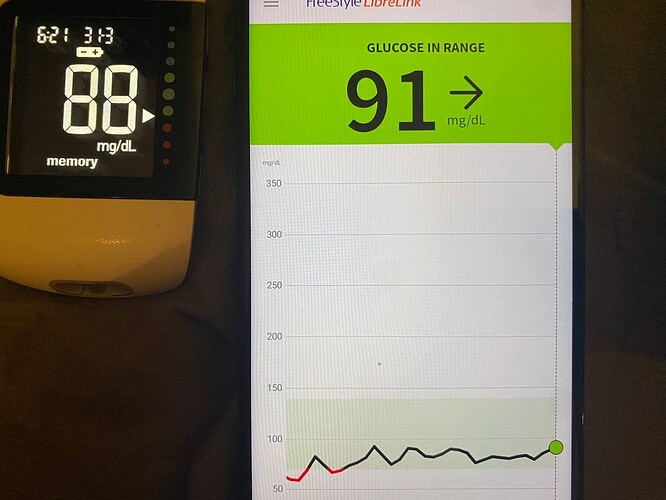Forget about more TSS… ![]() This is bad thinking and causes way more problems than it solves… TSS / PMC to get warning sighs you might be doing to much is good though.
This is bad thinking and causes way more problems than it solves… TSS / PMC to get warning sighs you might be doing to much is good though.
yes about TSS. It’s like testing hot water, you know it’s hot, but we always try to check if salt is enough ![]()
I don’t believe lactate is great for determining fat burn percentage, or even particularly good at it. RQ test would be significantly better but if you believe Maffetone that at any given level of lactate or HR level, fat burn percentage can and will change significantly based on pre-training activities (pre-ride carbs… ) or warmup style for example. So only RQ would clearly tell you this.
If you believe Coggan, not sure I do completely, but he suggests there are no thresholds, it’s all just continuums. My belief is there are kind of turn points where the rates change faster. So his turn point for AeT might be in that 135 bpm range… but could be different on different days. But I also agree with your main point that power is not good for AeT unless you get a strong ritual down that < 200w is always less than 135 bpm… for example.
It’s fine… TSS is useful and many people following TR plans felt they got a lot faster with tons of sweet spot high TSS training… so people are different. I think for a peak phase for someone doing 2 hour road races lots of sweet spot likely makes sense.
stupid question: whas it RQ test? ![]()
Respiratory quotient. - is a measurement used to determine which macronutrients (carbohydrates, fats, or proteins) your body is primarily using for energy at a given time
I saw that in some reports in the past. I guessed it was “calculated” using models based on the level of lactace / co2 produced. How can a test determine exactly which macronutrients are used at different hr intensities ?
Gas exchange with a mask. But protein needs to include pee test too but protein consumption is less useful in most cases anyway.
I will ask for such test next year during the next test with mask ![]()
I am a testing addict like you. But I have never done these tests.
Frequently I am wearing a CGM to test glucose / insulin response. At the moment I feel like I have found the holy grail of insulin sensitivity… But I do all kinds of personal testing.
Here is this morning / last night.
Don’t know if anybody else noticed this, but I think that cadence is too low for testing aerobic efficiency. You are relying a lot on muscle strain doing those low cadences and much less on aerobic fitness. I guess that’s also why the last test felt harder, you were even lower in cadence then the first one.
For aerobic conditioning, my feeling is that you should aim for a cadence of at least 80rpm. This will be much less taxing on the muscles and will effectively demand more aerobic form.
Hi @MedTechCD
thank you for your contribution. I added the info about the candence also for such kind of evaluations.
In the Joe Friel’s book I didn’t find suggestions about the cadence to maintain during the AeT test. Could you please elaborate a bit more on the assumptions you’re doing?
In general the higher the cadence, the higher is the HR (at least for me) while keeping power the same.
But in the end it’s true that we’re producing work and we’re using the aerobic metabolism (oxygen and fat) to fuel it. In any case it’s an interesting topic.
I’ve done weights for my whole life, and, perhaps for such reason, I feel easier to work at lower cadence.
Your test was 60min long and you felt it quit hard…
Can you imagine doing the same thing for 4+ hours? Do you think you can handle that? Probably not, and the reason is that at those low cadences (68 is really close to 'grinding), you’re quickly using up muscle glycogen and carbs. that’s not what you want when training endurance. Training endurance means that you can rely on oxygen and fat for hours in a row. Fat burning uses more oxygen then carb and glycogen burning. But fat and oxygen are available in unlimited quantities while glycogen is depleted in minutes and carbs in one to two hours. You need to train your body to provide as much oxygen to your muscles as possible with the goal of using as much fat as possible as the energy source. Then you will spare glycogen and carbs which you can use when it matters, when you get to the finish line. If you make it to the finish line with no glycogen left and very little carb reserve, you no longer have any punch to give it that last effort…
Go ~30W lower and spin at 80+ rpm. Yes, that will raise HR quit a bit, but training those conditions will teach your body to become energy efficient by using way more fat iso glycogen/carbs. The feeling will be totally different. You will get of the bike after multiple hours and have no sense of fatigue in the muscles but you will feel more central fatigue because you taxed your cardio-vascular system to provide more oxygen. Doing this over longer periods will grow mitochondria, the cells that are responsable to deliver stocked oxygen to your muscles and aid them to use fat as energy source.
If you plan to do events longer then ~2 hours, you will very much benefit of pedalling faster. Look at the pro’s, do you see any of them pedalling at 70rpm? No, the pro’s go for hours in a row at cadences over 90-95rpm. And that’s because they want to spare the rare glycogen for the moments when they really need it! They want to get to the finish line with legs that feel as fresh as possible.
By reducing cadence, you are actually ‘fooling’ te system. Lower cadence will have lower HR and for almost anyone higher power, but you’re not producing that power with your aerobic engine, or at least not a lot of it.
I don’t think that is true. I know a guy that rides 4-5 hour rides at about 60-65 RPM, meaning all his rides are that low and this guy I am talking about has a TT profile that never does hard efforts much over FTP… Some lady that won the 1 hour world record did it at 61rpm. Different people have different natural cadences. I do agree if he was specifically trying to do low cadence for this that is not the best way to test aerobic performance but if this is his natural cadence it is fine.
tnx for your precious feedback @MedTechCD
I agree with some of your points (e.g. all pros ride at 90+ rpm), but not all.
You say that I fool the system if I ride at 70rpm because I would use the glycogen in my muscles. At a first reading of this sentence I agreed, but the question that came out after was: what would stop my body to use the same glycogen reserves when pedaling at 80 or 90 rpm?
I think (but I’m perhaps wrong) that using (or not) the glycogen reserves depends on the amount of energy needed by the exercise in the amount of time needed to complete it, not the effort I’m trying do do. The shorter the amount of time, the higher the probability to use glycogen (because a lot of energy is needed in a short timeframe)
Am I totally wrong? I’d like also to see some references to your statements; I don’t think that me or you are totally wrong, and it’s a very interesting conversation ![]()
You felt a relatively hard effort, that’s what you said. Why was it hard? Did you have muscle fatigue or did you sense central fatigue?
The answer to that, is your guide to how to proceed.
He’s 80% of FTP for 2 hours @200w… For most people it would feel closer to hard than easy. Especially since he says his FTP might be set a bit high so in reality it might be over 80% of FTP. I do agree central or peripheral is interesting question though. Legs felt tire or more like body felt tired…
I felt more muscle fatigue, but it was also true that I rode 3.5 hours before the test (light effort, but still on saddle) + it was the end of the day and on I didn’t completely recovered from a hard workout made on Saturday (Feedback about "Collywobbles 135 + CAD" CJ workout) that I made for about 1-1.5H at very high cadence (107 rpm).
Normally those tests should be made after very good recover, it wasn’t exactly the case this time.
What do you think about my question on how glycogen is used?
Low HR + fairly high power (~80% or more FTP) is likely to use more carb/glycogen. But then again, everyone is different. Riding hours in a row at low cadence is not the ‘common thing’, but there are exceptions.
The body’s instinctive reflex is to spare glycogen when it can. That’s just evolution of the human being. You may need to use your glycogen to get away from a lion attack, so don’t waste it if you can use another source that is available in abundance.
I’ll google a bit to find more evidences of this statement. It would be nice if anybody could provide also some external references.
(I agree that is more likey - in general - to use more carb/glycogen; but I’m just not sure that this is the case if the HR stays below AeT for the whole workout)

